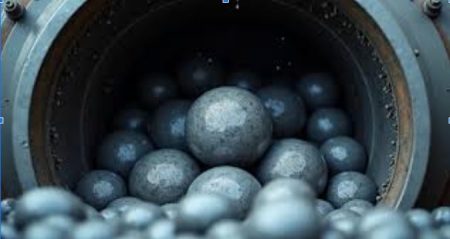 Your production line depends on the use of the right industrial milling media. Until something goes wrong, it is easy to overlook how much such elements reduce risk. Media quality and type are key factors in process stability, safety, and operational cost.
Your production line depends on the use of the right industrial milling media. Until something goes wrong, it is easy to overlook how much such elements reduce risk. Media quality and type are key factors in process stability, safety, and operational cost.
A major failure the right media can prevent is scratching or chipping of equipment by worn-out or uneven grinding media. Choosing media that fits a hardness and size match for your process avoids such a costly problem.
Other common failures include improper flow and quality due to the breakdown of tumbling media, improper media within a catalyst bed may bring about system collapse. Poorly suited media degrades when exposed to heat or reactive compounds, resulting in uneven flow and failure of the chemical reaction. By selecting advanced alloys or treated media, you stabilize the bed and secure consistent performance over time.
How to Avoid These Failures
Start with precision sizing. Oversized media wastes energy and causes uneven particle size. Review your mill fast and slow speed ratings and match accordingly.
Regular Inspection is Key
Schedule inspections of your tanks or mills. Media shape and density can change with time; some fines may be breaking off and can be detected through the use of sieves. Tracking media performance gives a reliable replacement cycle. Avoid waiting until cracks or a drop in performance appears.
Use Quality Media
Changing vendors based on cost can create risks. For instance, stainless steel tumbling media shows a lot of variation in both quality and finish. Poorly made media is prone to flaking. Consistent sourcing and testing deliver predictable results. Be sure to get batch records from your supplier.
Monitor Process Feedback
Your operators are your first line of defense. Training them to look for changes in grinding speed, batch consistency, or sounds produced during operation often provides the first early warning of a media problem before actual equipment damage or contamination occurs.
Conclusion
Failures in milling and chemical systems are often predictable. Common failures include improper flow and quality due to the breakdown of tumbling media. As media wears down, it can create fine particles that blend into your product. As for applications in the chemical industries, improper media within a catalyst bed may bring about system collapse. Poorly suited media degrades when exposed to heat or reactive compounds, resulting in uneven flow and failure of the chemical reaction.
By selecting advanced alloys or treated media, you stabilize the bed and secure consistent performance over time.The right media choice and maintenance plan prevent costly downtime and protect your product. Invest in the right tools and follow a consistent inspection program. Over time, your systems will run smoother, and your costs will drop.


